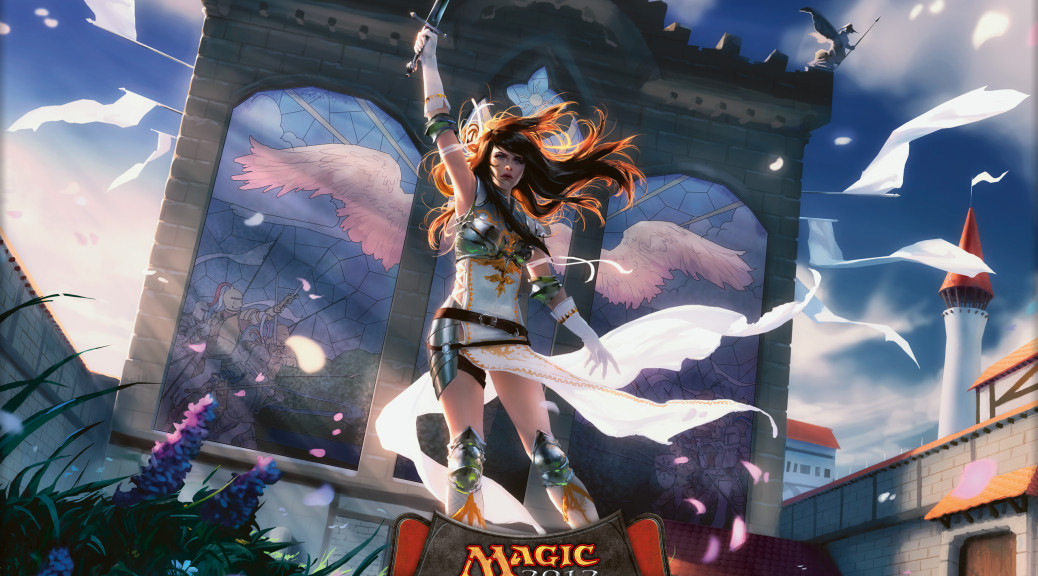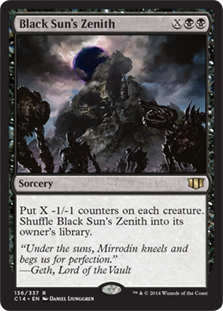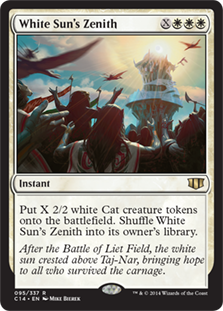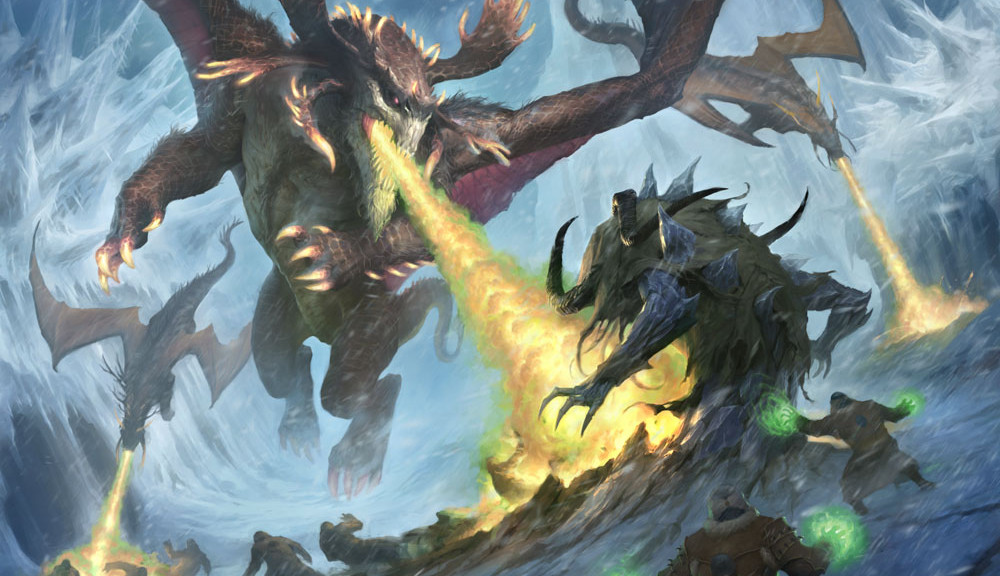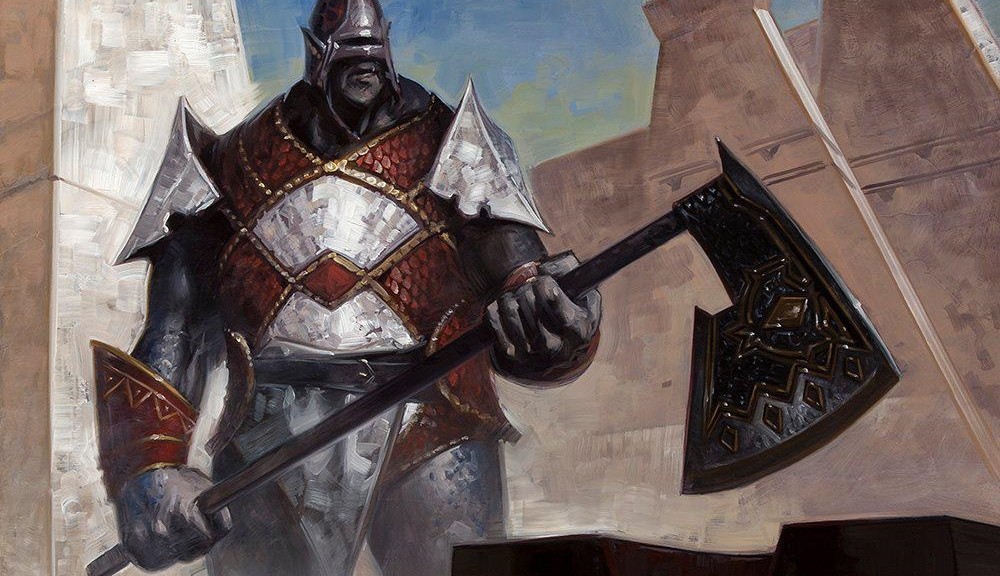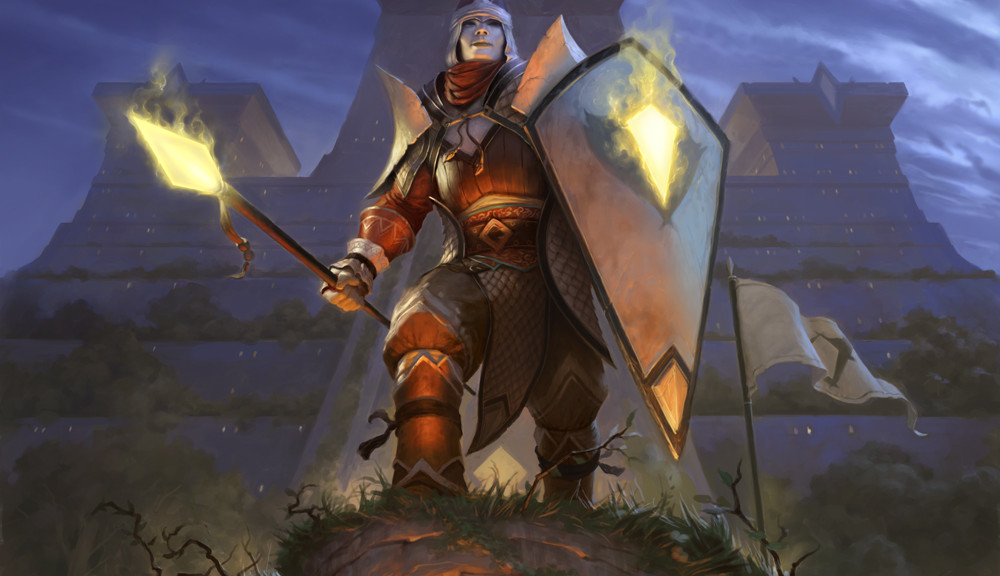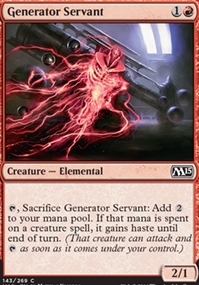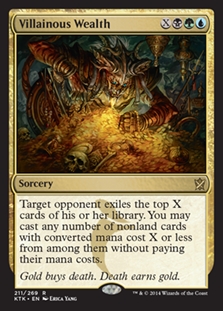By Guo Heng Chin
I’ve always wondered how it felt like to be an early adopter of bitcoins. To be one of those who got in when bitcoins were $0.20 each (bitcoin is now trading at $257.09 per bitcoin). To be a member of the bitcoin millionaire club just for the virtue of being an early adopter of a technology most initially shrugged off as a passing fad.
Ah, the perks of being an early adopter.
While I was drawn into Commander when the format first broke into the mainstream with the release of the first Commander products in 2011, I paid little attention to the financial aspects of Commander cards. It was a fun, casual format of singleton cards and my logic (flawed in retrospect) told me the demand for Commander cards would not be sufficient to drive the price of Commander staples.
In 2012, I was surprised when I heard about the price of a foil Chromatic Lantern on an episode of Brainstorm Brewery. Then the Nekusar spikes happened in late 2013; Old rares like Forced Fruition, Teferi’s Puzzle Box and Wheel of Fortune spiked because they had synergy with Nekusar, the Mindrazer, who turned out to be one of the most popular commanders from Commander 2013.
Fast forward to 2015. I am now writing a Magic finance column and one of my area of focus is undervalued Commander foils. While most Commander staple foils have already spiked, there are still some undervalued Commander foils lurking beneath the bush, but they are hard to find. It feels a bit like foraging for truffles. I hate to admit it, but the treasure cruise for speccing on Commander foils had left the port a while ago and we are trawling the waters for any gold that fell off the barge.
Magic, fortunately is an ever-changing landscape, and once in a while we get something new brewing on the horizon. Sometimes it’s an innovative supplementary product like Conspiracy. Sometimes it’s an exciting new format.
The Littlest Giants
Tiny Leaders seemed to be the talk of Magic town lately. Tiny Leaders is a new take on the Commander format where players play with 50 card decks including their commander, and a defining caveat that only cards with three or less casting cost can be played. Designed by Bramwell Tackaberry in 2013, the format spread quickly among his local community and in the past few months, began to gain traction in the Magic community as a whole.
Chas Andres briefly discussed Tiny Leaders in his article last November. Jimi Brady at GatheringMagic.com put up a piece on Tiny Leaders with some sweet decklists the same month. Eric Levine, Commander-in-Residence at Channel Fireball wrote an article about it in December, so did Matt Higgs at StarCityGames. I first heard about the format myself from Brainstorm Brewery’s mid-January 2015 Fate Reforged set review podcast, where Jason E Alt was talking about the viability of two of the Fate Reforged khans as Tiny Leader commanders. My fellow finance writer at MTGPrice, Cliff Daigle also wrote an article about the format last week. Even people at The Mothership started paying attention to the format recently:
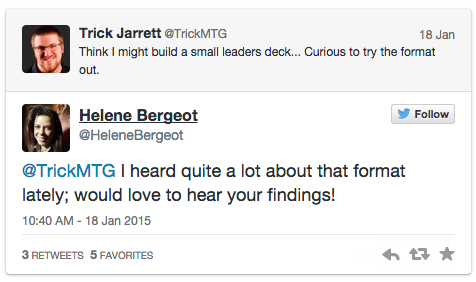
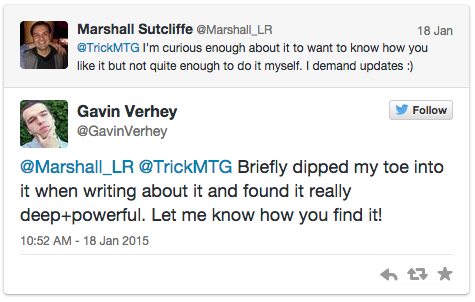
The Tiny Leader community is still growing, with the Facebook group and subreddit both boasting a membership of around 1,500 members each as of writing. I highly recommend checking out both groups if you are interested to delve more into the format. And I definitely recommend giving Tiny Leaders a try if you have yet to do so.
Tiny Leaders, Big Potential
Why do I think Tiny Leaders has the potential to be the next big format in Magic? It shares a characteristic found in a lot of successful startups: it caters to an unfulfilled niche.
Tiny Leaders is a cross between Commander and Legacy, a singleton Legacy. The majority of the mana curve in Legacy lies at three or less anyway, so cards that are good in Legacy are bound to be good in Tiny Leaders as Jimi Brady pointed out in his article. Jimi also mentioned a very valid point on why the format has the potential to catch on like wildfire: it has a relatively low entry barrier. A Tiny Leaders deck requires less cards than the usual 60-card deck and only one-of rather than a playset-of expensive staples.
I can’t get into Legacy with the single Tarmogoyf and Dark Confidant I opened from my two boxes of Modern Masters, and they are not exactly optimal cards for Commander. However they fit snugly into my Anafenza, the Foremost Tiny Leaders brew. To be honest, the virtue of being a singleton format is that players could get away with missing a few expensive pieces and still have a relatively competitive deck. This list by redditor /u/darkflame1o1 performed pretty well at a tournament despite missing Dark Confidant and Tarmogoyf.
Tiny Leaders appeals to players too spikey to play Commander, or players who are weary of long Commander games and all the politicking which are integral to Commander games. Even Brainstorm Brewery’s ‘I’m-never-gonna-touch-Commander’ Marcel professed an interest in Tiny Leaders in their recent podcast.Tiny Leaders has the competitive lure of Duel Commander, and is better designed for competitive play.
I feel I ought to include arguments against Tiny Leaders taking off to provide an objective view of the format’s future. While Chas Andres mentioned a few good ones in his article, he nevertheless gave the format a moderate to high chance of future success. I think those drawbacks mentioned in Chas’ article – potential power-level imbalance and small number of players – are issues that confronted every new format as it made the leap from niche to mainstream.
Power-level imbalances could be ironed out with astute management of the banlist. The banlist is currently managed by Steven Harmonic and Matthew Turnbull with input from the community (Steven and Matthew are highly active on the Tiny Leaders subreddit and Bram manages the Tiny Leaders Facebook group).
The issue with the format’s small player base is temporary and is remedied as format hits a tipping point in momentum, something which I think is Tiny Leaders is heading towards right now with the amount of interest and attention it is getting from the community. Besides the increasing number of articles being written about the format, and the number of times Brainstorm Brewery mentioned it in their podcast, Cedric Phillips and Patrick Sullivan briefly discussed Tiny Leaders during the commentary of StarCityGames’ Washington DC Open last weekend, all good signs of the format breaching through into the mainstream.
Tiny Investments
Tiny Leaders cards are in an interesting spot financially – the format’s three mana and below casting cost restriction meant that a swath of the format’s staple overlap with Legacy and Modern staples, which are already pricey. On the other hand, the restriction led to cards with casting cost-specific effects to be more powerful in the context of Tiny Leaders. Unearth becomes a Reanimate without a drawback. Smother becomes an unconditional removal. Three CMC and under spells with X as part of their casting cost is a way to circumvent the figurative power level of the format, as spells with an X in their casting cost scales according to the amount of mana channelled into X.
Today, we are going to go through a few of these cards that could potentially spike if Tiny Leaders takes off. First off, we have the heads of the states decks.
The Leaders
Grenzo, Dungeon Warden
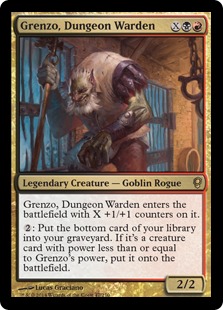
Non-foil: $1.33
Foil: $18.03
Two reasons why Grenzo, Dungeon Warden is sweet in Tiny Leaders: He has an X in his casting cost and he could generate a swarm all by himself. Tristan Gregson pointed out on Twitter that Grenzo could be a good Tiny Leaders pick-up and I wholly agree. Non-foil copies are unlikely to stay at $1.33 as the demand for Grenzo increases and being flavor-tied to Conspiracy, Grenzo is unlikely to see a reprint. Foils are already expensive as Grenzo is also a decent Commander general and I am not a fan of speccing on those.
Ezuri, Renegade Leader
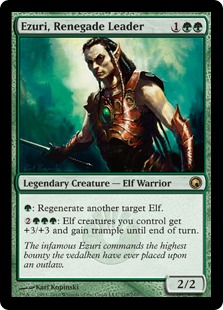
Non-foil: $1.67
Foil: $5.78
Ezuri Elfball is one of the tier one decks in Tiny Leaders. $5.78 is a good buy-in for foil copies of a tier one leader from an old set. Non-foils at $1.67 have room to grow but being reprinted Commander 2014 means a longer lag in appreciation. I would rather snag up foil copies.
Varolz, the Scar-Striped
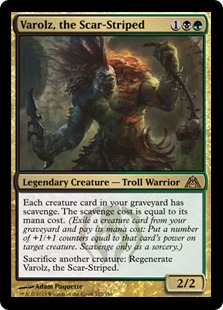
Non-foil: $0.59
Foil: $3.05
Another tier one leader, foil Varolz, the Scar-Striped is only $3, courtesy of being from a recently rotated set. I would pick up foils rather than non-foils at this price. Varolz is also playable as part of the 49.
Ambassador Laquatus
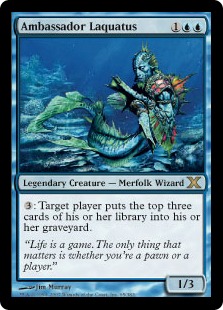
Non-foil: $1.09 (Tenth Edition); $0.70 (Torment)
Foil: $3.51 (Tenth Edition); $3.68 (Torment)
Ambassador Laquatus is a good example of cards that are crap everywhere except in the context of Tiny Leaders. Against a 50-card deck, milling becomes a viable competitive strategy. Sword of Body and Mind was banned for the exact reason. Laquatus is a tier one leader and both foil and non-foil copies are good pick-ups at those prices.
Contextually Good Cards
As mentioned above, some cards are just better in a format with an imposed maximum casting cost of three.
Unearth
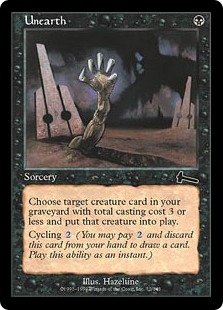
Non-foil: $0.72
Foil: $7.02
Unearth is a unconditional and drawback-free Animate Dead in Tiny Leaders. Cheating-into-play may not be necessary for most creatures costing three or less, but Entomb is legal in this young format and there is potential for graveyard shenanigans. Non-foil copies look like good pickups at under $1.
Sunforger
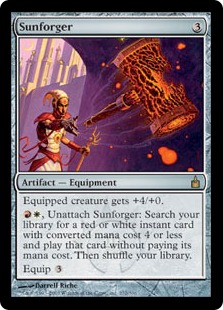
Non-foil: $1.44
Foil: $8.98
Jason E Alt has been harping about this card for a long time. Indeed the first time I’ve heard about Tiny Leaders was from Jason harping about Sunforger, so I have him to thank for that. Jason is confident that Sunforger is one of the best cards in Tiny Leaders. At $1.44, it is a low risk spec and a good one in my opinion. Also foil Sunforgers recently spiked, as highlighted by mtgmarketwatch subreddit founder /u/mtd14.
The Black and White Zeniths
Spells with X in their casting cost circumvent the imposed three casting cost ceiling and there is a lot of potential for powerful effects the power of those spells scale according to the amount of mana sinked into them. White Sun’s Zenith has the potential to be a late game finisher not just for control decks, but also for midrange decks looking for a card to close out games fast in the mid-to-late game. Foils for $2.39 could be a good investment.
Tiny Leaders’ three casting cost ceiling rendered a lot of sweepers illegal in deckbuilding. Black Sun’s Zenith is one of few black sweepers available as pointed out by Chaz from BoltSnapBolt. Although the Game Day full art foils just increased in price, the Mirrodin Besieged foils at $5 is not a a shabby pick-up.
Ratchet Bomb
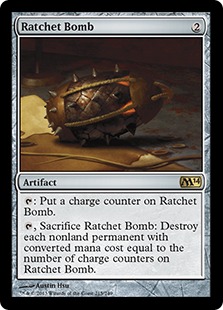
Non-foil: $0.48 (M14); $0.51 (Scars of Mirrodin)
Foil: $1.70 (M14); $3.24 (Scars of Mirrodin)
Speaking of sweepers, Ratchet Bomb is a colorless sweeper that could become a staple in the Tiny Leaders besides Engineered Explosives. Ratchet Bomb may be too slow for other formats, but is efficient in Tiny Leaders. Foils at $1.70 have room to grow if the format takes off.
The Big Picture
Tiny Leaders is a format in its infancy. The format is a brewer’s paradise, brimming with unexplored deckbuilding space. There has yet to be a repository for Tiny Leaders decklists or tournament results. The two places to find Tiny Leaders decklists currently are the Tiny Leaders Facebook group and subreddit. I would definitely recommend checking out those forums. There are a lot of innovation and ideas being bounced around, but there has yet to be highly-tuned lists of respective archetypes, which means an abundance of opportunity for deck brewers to get brewing.
The metagame is still young and evolving. The addition of Shu Yun, the Silent Tempest and Alesha, Who Smiles at Death injected a lot new design space in the format as previously Tiny Leaders does not have a Jeskai or Mardu leader and resorted to a placeholder ‘leader’ with no abilities.
The format’s future is by no way certain. For all we know, the hype and interest that is building up a momentum right now could dissipate before the end of the year. However, judging by the overwhelmingly positive response from those who dipped their toes in the format, I am confident that Tiny Leaders would grow into the next big format.
In Retrospect
I guess I am not hopelessly bad in spotting the next big thing. I was an early fan of Modern and I completed my playset of blue-based staples back in 2011, shortly after the inception of Modern. I was confident that Modern would grow into the next big thing as it filled a niche that many players, myself included felt was missing from the competitive scene.
I wanted to play in a competitive non-rotating format where I could run my favorite pet deck all the time, but I could not afford to buy into Legacy. Modern filled that niche in that it served as an intermediary between Standard and Legacy, a non-rotating format with a lower barrier of entry. Gavin Verhey’s Overextended has been garnering a lot of interest, so there must have been plenty of other players in similar positions as I was.
I had my hipster moment with Modern. I acquired my Scalding Tarns and Misty Rainforests at $15 each, Vendilion Cliques at $8 each, Player Rewards Cryptic Commands at $10 each, among many others. I ran Storm in the first Modern PTQ season in 2012 and crashed badly, but it was fun. Storm was my pet deck for one whole year. It won me my first Grand Prix Trial and performed okay for me on Magic Online daily events. Eventually Jeskai (UWR back in those days) Geist took over and it has been my go-to deck up till Ancestral Recall became Modern legal (sort of).
My excitement for Tiny Leaders reminded me of how I felt about Modern in 2011. I am excited for Tiny Leaders because the format is an opportunity for me to play a fast-paced Duel Commander game with a touch of Legacy’s power level but only a fraction of Legacy’s buy-in fee. And I am excited that my enthusiasm for the format is shared by many other players and writers.
Bonus: My Anafenza, the Foremost Tiny Leaders
Seeing that there is a dearth of Tiny Leaders decklists at the moment, let me share with you my Anafenza brew that I am taking with me to what seems to be Malaysia’s first Tiny Leaders tournament this weekend.
Commander: Anafenza, the Foremost
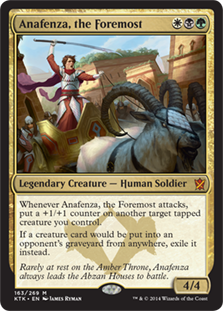
Creatures
Avacyn’s Pilgrim
Bird of Paradise
Deathrite Shaman
Llanowar Elves
Cartel Aristocrat
Dark Confidant
Melira, Sylvok Outcast
Scavenging Ooze
Tarmogoyf
Tidehollow Sculler
Eternal Witness
Knight of the Reliquary
Kitchen Finks
Loxodon Smiter
Varolz, the Scar-Striped
Planeswalkers
Liliana of the Veil
Instants
Enlightened Tutor
Worldly Tutor
Sword to Plowshares
Abrupt Decay
Smother
Chord of Calling
Dismember
Midnight Haunting
Sorceries
Green Sun’s Zenith
Lingering Souls
Thoughtseize (I don’t own Inquisition of Kozilek)
Artifacts
Sensei’s Divining Top
Sword of Feast and Famine
Sword of Fire and Ice
Lands
Gavony Township
Windswept Heath
Wooded Foothills
Flooded Strand
Polluted Delta
Bloodstained Mire
Arid Mesa
Marsh Flats
Godless Shrine
Overgrown Tomb
Temple Garden
Woodland Cemetery
Sunpetal Grove
City of Brass
Cavern of Souls
Command Tower
Plains
Swamp
Forest
The deck attacks on multiple angles, in the spirit of one of the best Magic strategy articles in recent time. There are four one-drop mana dorks to ‘ramp’ into the three drops on turn two for a fast start. One of the perks of having a leader is having access to a three drop to ramp into all the time. The deck is also quite mana-hungry as the mid-game plan hinges on Gavony Township and tutoring out value creatures.
The mana dorks help fuel the deck’s mid game, besides providing an extra layer of consistency to ensure that we hit our ‘land drops’ every turn. Those mana dorks could be conscripted to the frontline during the mid-to-late game as they get jacked up with Anafenza’s counters or Gavony Township.
Gavony Township could be tutored up with Knight of the Reliquary, who in turn is tutorable with Green Sun’s Zenith, Chord of Calling or Worldly Tutor. Yup, there’s plenty of tutors to maximise the consistency of the deck.
The tutors are also present for the deck’s second angle of attack: the classic Melira infinite life combo. The combo pieces are Melira, Sylvok Outcast, Kitchen Finks and either Cartel Aristocrat or Varolz, the Scar-Striped to loop for infinite life. The initial blueprint had a Blood Artist to enable a combo kill, but I’ve found that Blood Artist was a dead card outside the combo. With the exception of Melira, all the other components of the combo are creatures that can provide exceptional value by themselves. Kitchen Finks sort of combos with Anafenza to reset its -1/-1 persist counters. Varolz and Cartel Aristocrat are two hard to remove creatures, ideal targets for Anafenza to bestow +1/+1 counters on.
The game plan is resoundingly similar to Birthing Pod decks (RIP): grind your opponent out with value creatures and develop a superior board position with Gavony Township. If and when the opportunity arises, execute the infinite life combo by tutoring out the pieces on instant speed. Tidehollow Sculler is there to give us a tutorable hand disruption if we find the need to ensure that the coast is clear before we execute the Melira combo.
Thanks for reading through all 3,000 words of this article. I hope the article has provided you with an insight into this wonderful new format called Tiny Leaders and cards which price could take off together with the format. Comments are most welcomed and you either leave a comment below or at engage me on Twitter at @theguoheng.
